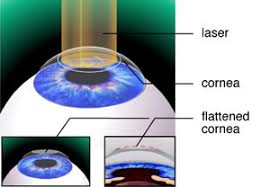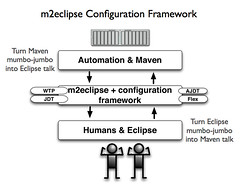This post was originally titled "FTE vs. Contract in this Economy", but it didn't seem to capture the essence of this entry. I wanted to write about why I think contracting is better in this down economy, but I also wanted to write about how you you might go about setting up your own company. Starting a company is relatively easy from a legal standpoint, and hopefully I can provide some resources that'll make it even easier.
First of all, I believe that contracting is better in this economy for a very simple reason:
When you're a contractor, you're prepared to be let go.
There's really nothing like being laid off. It sucks. It often shocks you and makes you depressed. The good part is you usually get a good afternoon's worth of drinking out of it, but that's about it. Severance is cool, but let's face it - you'd much rather be employed.
As a contractor, you're always looking for your next gig. You're prepared for the worst. You're more motivated to learn marketable skills. You're constantly thinking about how you can market yourself better. Writing (blogging, articles, books) is an excellent way to do this and I believe it's rare that FTE are as motivated to do these kinds of things.
Being a contractor forces you to better yourself so you're more marketable.
People's biggest fear of contracting is that they'll have a hard time finding their next gig. In my career, I've rarely had an issue with this. There's always contracts available, it's just a matter of how much you're going to get paid. Yes, I've had to suck-it-up and make $55/hour instead of $125/hour, but that was back in 2003 and $55/hour is still more than I would have made as a FTE.
The other thing that makes me believe contracting is better in this economy is I believe companies are hiring more short-term contractors than employees. I don't know if this is because they consider employees liabilities and contractors expenses, but something about it seems to make the books look better.
So you've decided to take my advice and try your hand at contracting. Should you setup your own Corporation or LLC?
Starting a Company
Yes, you should absolutely start your own company. As a Software Developer, chances are you're going to make enough to put you in the highest tax bracket. If you're a Sole Proprietor (no company), you will pay something like 35% of your income to taxes and you can be sued for everything you own by your clients.
Should you create an LLC or Corporation? I started Raible Designs in May 1998. I started out as an LLC and later converted to an S Corp. For the first few years, I made $30-$55/hour and this seemed to work pretty well. I believe this was similar to having a Sole Proprietorship (because I was the only employee), except that I was protected from lawsuits.
In 2001, I got my first high-paying gig at $90/hour and my Accountant suggested I change to an S Corp to save 10K+ on self-employment tax. I'm certainly not an expert on the different types of business entities, but this path seemed to work well for me. It was $50 to convert from an LLC to an S Corp. I'm not sure if you can go from an S Corp to an LLC. The beauty of an S Corp is the corporation typically gets taxed at 15%, so you can run a lot of things through your business and pay less taxes. Date nights can be business meetings, vacations can be Shareholders Meetings, seasons tickets can be client entertainment and you can write off your car and fuel costs.
There's lots of good resources on the web that describe the different business entity options. My favorite is A List Apart's This Web Business IV: Business Entity Options. Another good resource is How to form an LLC.
The hardest part of starting a new business is coming up with a good name. My advice is to make sure the domain name is available and pick something you like. I chose Raible Designs because I designed web sites at the time. Raible is a pretty unique name, so that's worked well having it as part of my business name. Googlability is important - don't choose a generic name that will make you difficult to find. Potential clients should be able to google your business name and find you easily.
Once you've picked a name, the business establishment part is pretty easy. In Colorado, you can File a Document with the Secretary of State. Their site also allows you to reserve a name if you're not quite ready to make the leap.
You'll also need to get a Federal Employer Identification Number (FEIN) from the IRS. The IRS has a good Starting a Business article and also allows you to Apply for an Employer Identification Number (EIN) Online.
Once you've got all the documents setup, you'll want to create a bank account for your business. I'm currently using Wells Fargo and really like how software-friendly they are. Their online banking is clean and easy to use. They also support QuickBooks for the Mac. They have Payroll Services to allow you to pay your quarterly taxes online as well as setup direct deposit, but I'm not using them.
For payroll, I use PayCycle and have nothing but good things to say about them (see update below). I have the Small Business Package at $42.99 per month. This package allows me to pay myself and employees + up to 5 sub-contractors with direct deposit. It also allows me to pay both Federal and State quarterly taxes online. Of course, if you can also get an Accountant to do this for you.
Having a good Accountant and Financial Advisor (for your retirement plan) will likely be an essential part of your business.. LinkedIn's Service Providers is a good way to find recommended professionals in your area. For example, click here to search for Accountants and then click the change location link in the top right corner to specify your zip code.
Finally, you'll need insurance. The Hartford has a good Small Business package that costs around $500/year. It's liability limits have worked for all of my clients and I'm covered if my laptop ever gets stolen.
For Health Insurance, I recommend using eHealthInsurance.com to find a good provider for you. I don't get sick or hurt much, so I typically get a disaster prevention plan with a $5K deductible. For dental insurance, brush your teeth. Vision insurance typically sucks, so I wouldn't buy it. Yes, our health care system in the US needs work and I believe if everyone had a small business, it might get more affordable a lot quicker.
Over the next few days, I'll post some additional advice I've received on retirement plans, deducting a home office, drawing up contracts and how to come up with a good rate. If you're an Independent Software Developer and have any additional advice, I'd love to hear it.
Update: I take back what I said about PayCycle. After having a couple of insufficient funds when re-activating my account in January (they were pulling from the wrong account), they've changed my direct deposit lead-time to 5 days for the next 6 months. This means I forget to create checks on time since their reminder gets sent 2 days before. Time to try Wells Fargo.
Update October 2009: I never left PayCycle and I continue to use them to this day. I'm a satisfied customer, but do believe it still takes too long to make changes to your electronic services setup.








